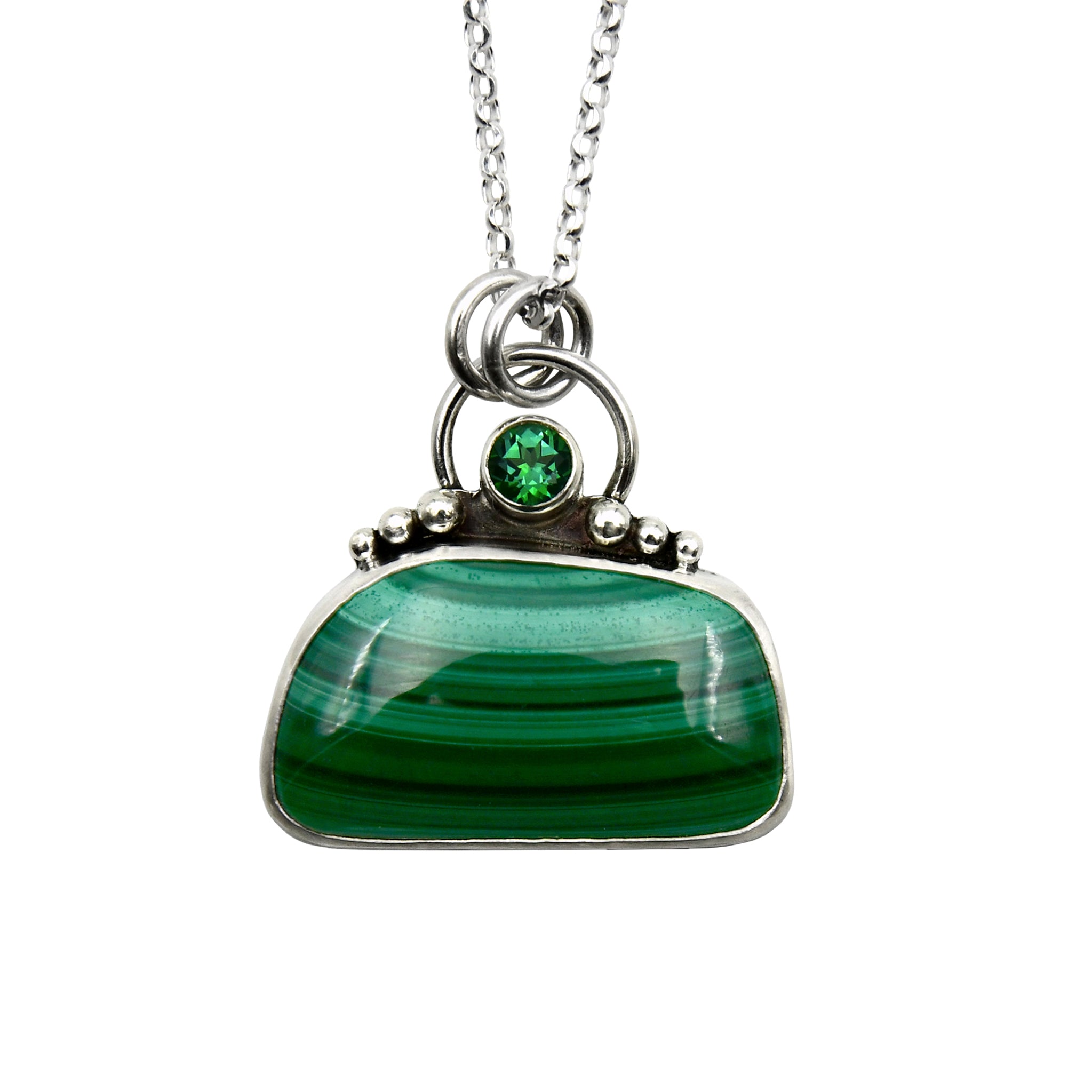This Petite Malachite Pendant topped with a sparkling green Rainforest Topaz and a semi-circular bail displays a bit of lighthearted whimsy with its purse-like design. What better setting for this healing and balancing stone!
Details:
- 1" wide by 7/8" long
- Sterling and fine silver
- Sterling chain in your choice of length
Gemstone information:
Malachite gets its vivid green color from copper. Invariably associated with copper ore deposits, malachite ranks as a minor copper ore, with 58% copper content. Its recovery generally occurs as a sidelight of copper mining.
Malachite may have been mined in Egypt as early as 4,000 BCE. Not only was it used as a gemstone and ornamental material, the stone was ground into pigments for painting and cosmetics. Not until the Industrial Revolution were synthetic pigments created that could rival its color. Restoration experts still use malachite pigment formulas for authenticity when conserving old paintings.
Lapidary artists use this stone extensively to make cabochons, beads, boxes, inlays, and carvings of all kinds. With great care, skilled artists can turn malachite on a lathe to create goblets and candlesticks.
Malachite's characteristic swirling and concentric band patterns are a result of its formation process. These bands reflect the waxing and waning of the solutions necessary for formation and the changes in their chemical content.
Malachite can appeal to the gem lover as well as anyone interested in nature's wonders. Mineral and gemstone collectors compete to acquire prime specimens in some of the stone's rarer habits. Some of the most desired forms are: Botryoidal masses, stalactites or slices cut from them, and pieces with splayed-out clusters of needle-like crystals showing a velvety chatoyancy (similar to a shimmer).
Malachite can also form in combination with other copper-bearing minerals. Blue-green chrysocolla, dark blue azurite, or brick-red cuprite can create rocks of unsurpassed beauty when combined with malachite's forest green.


